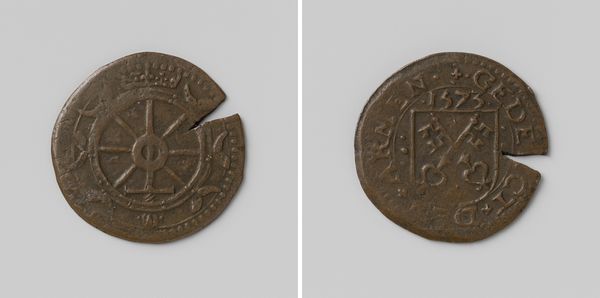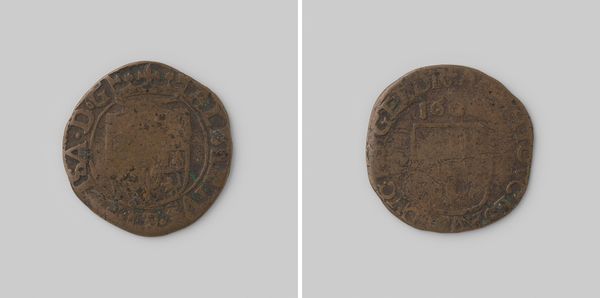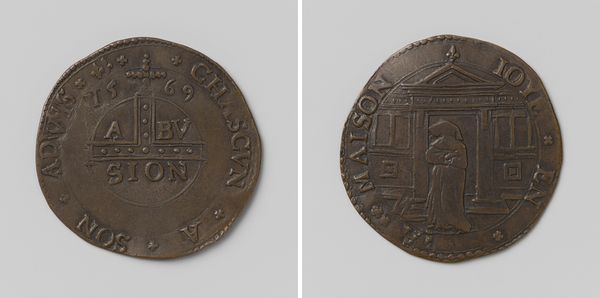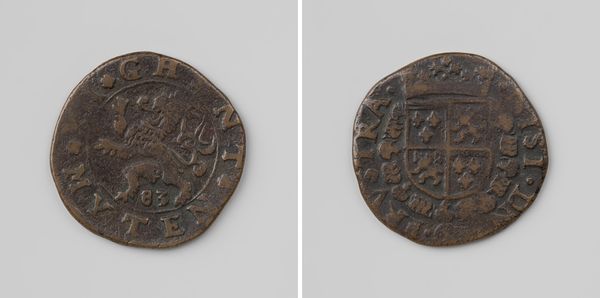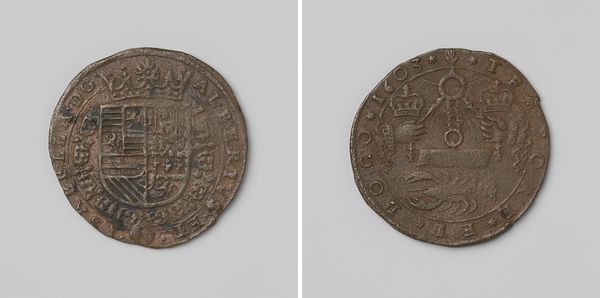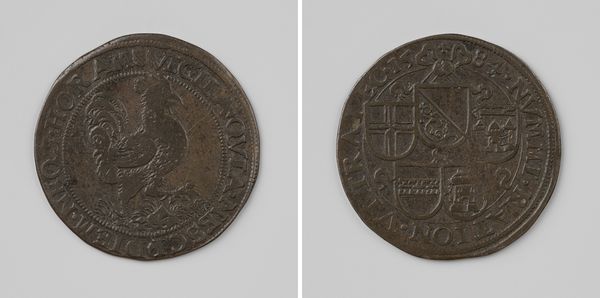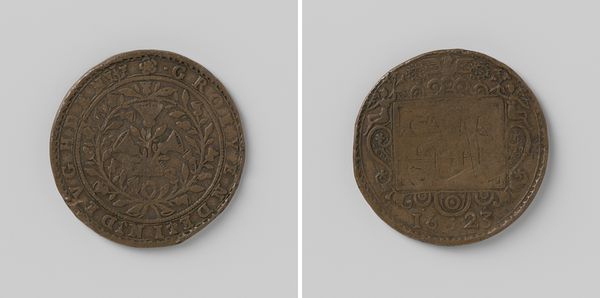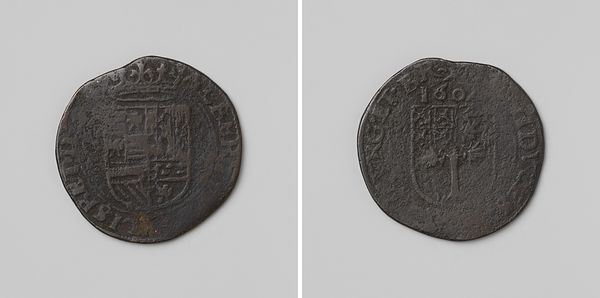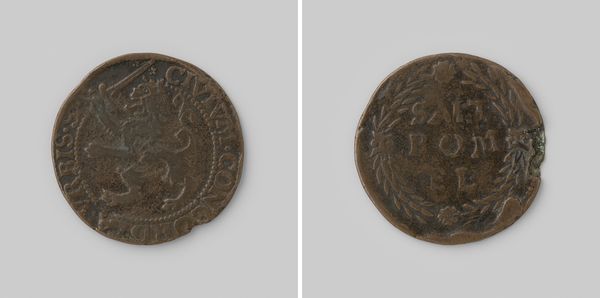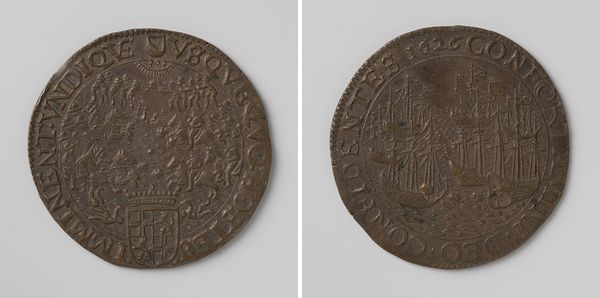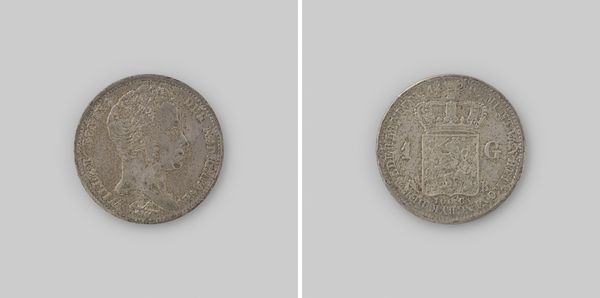
print, metal, relief, bronze
#
dutch-golden-age
# print
#
metal
#
sculpture
#
relief
#
bronze
#
ancient-mediterranean
#
coin
Dimensions: diameter 2.2 cm, weight 3.53 gr
Copyright: Rijks Museum: Open Domain
Curator: Here we have a bronze 'duit,' a coin minted by the Batavian Republic in 1796, specifically for the province of Zeeland. Editor: My initial impression is the simplicity of form—the circular shape, the weathered bronze texture, lending an earthy feel to such a small object. Curator: Indeed. Consider the political context. The Batavian Republic was a revolutionary state, heavily influenced by France, that existed from 1795 to 1806. These coins were instrumental in establishing economic and ideological stability during that turbulent time. The very act of creating currency was about declaring independence and sovereignty. Editor: Focusing on the object itself, the design elements strike me. On one side, the crowned shield featuring a lion emerging from water—the Zeeland coat of arms, powerful heraldic imagery that appears both archaic and boldly present, surrounded by lettering. And the reverse showing ‘Zeelandia’ with the date 1796. The coin uses imagery and language to communicate. Curator: Precisely, it aimed to propagate an idea. The lion embodies the strength of Zeeland, its defiance against the water, reflecting the ongoing battles against floods in the region. Each 'duit' was a piece of propaganda circulating among the populace, normalizing and legitimizing the Batavian Republic. It's interesting to consider how small objects can embody larger political projects. Editor: There is something quite compelling about such weight conveyed through form; that the functionality, production and design, come together so clearly in an everyday item. It’s almost monumental despite its scale. Curator: A testament to how potent everyday items can be when understood within the web of socio-political circumstances from which it came. A tangible vestige from the revolutionary fervor and formation of national identity during the Batavian Republic era. Editor: Looking at it simply as an object, there's also a beauty in the stark lettering, balanced by the emblems. Curator: Right, its appeal extends past mere historical relevance; the duit offers insights into craft and heraldic symbols during a pivotal transformation period in Dutch history.
Comments
No comments
Be the first to comment and join the conversation on the ultimate creative platform.
